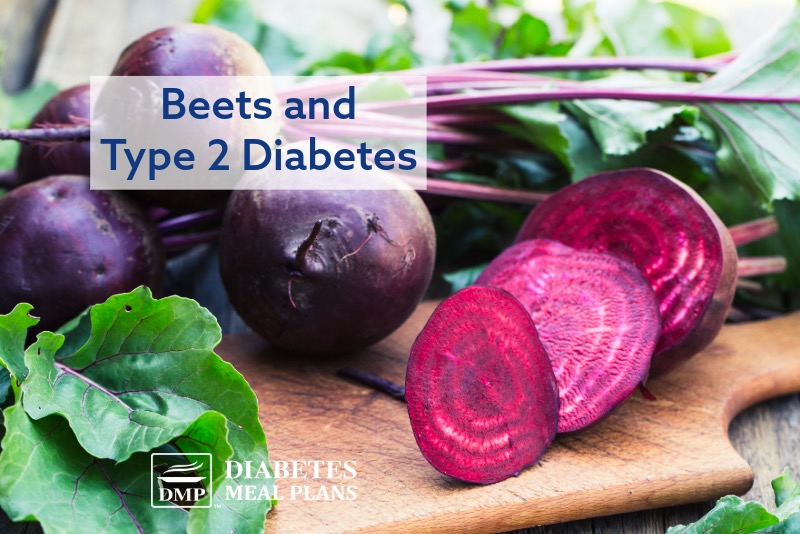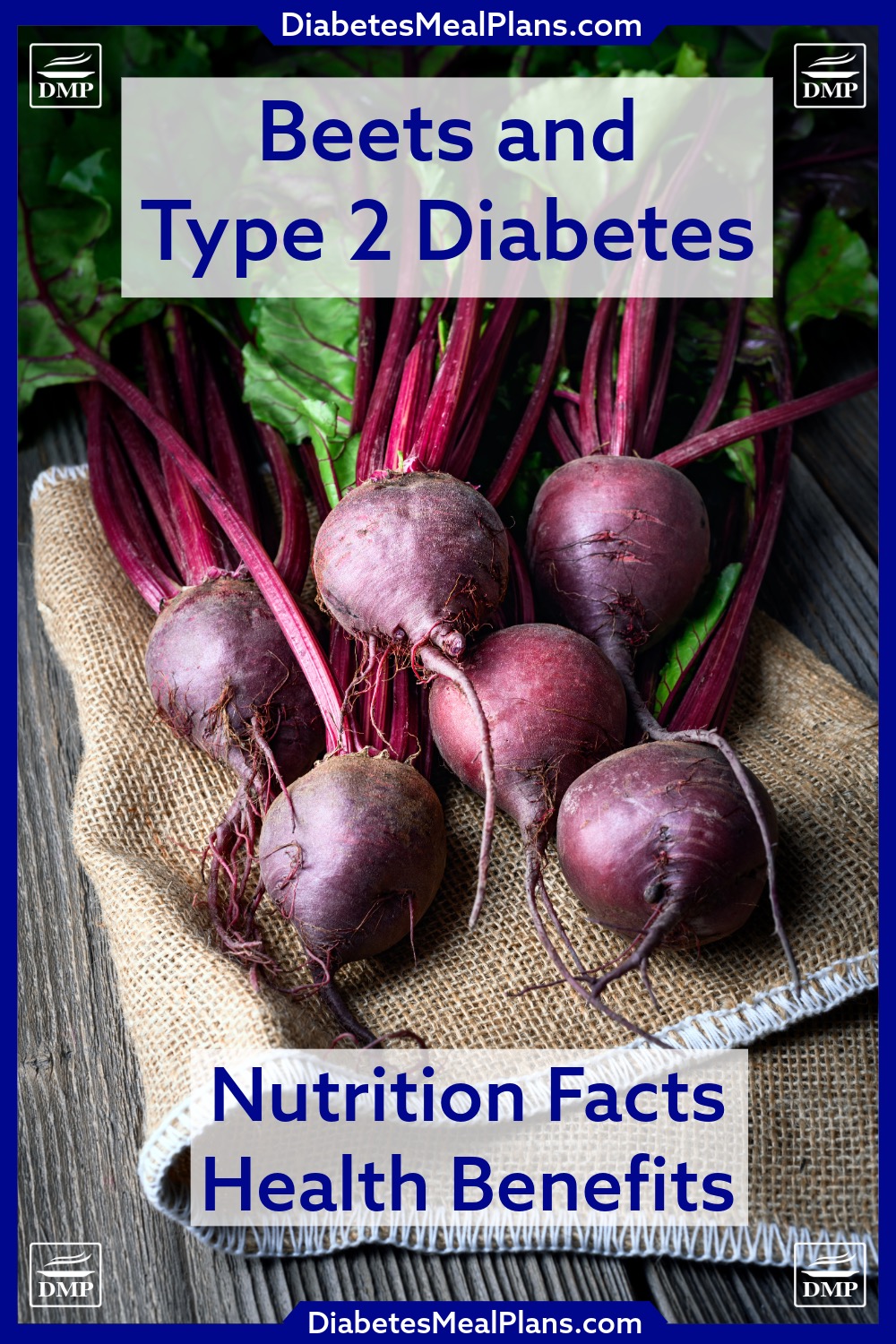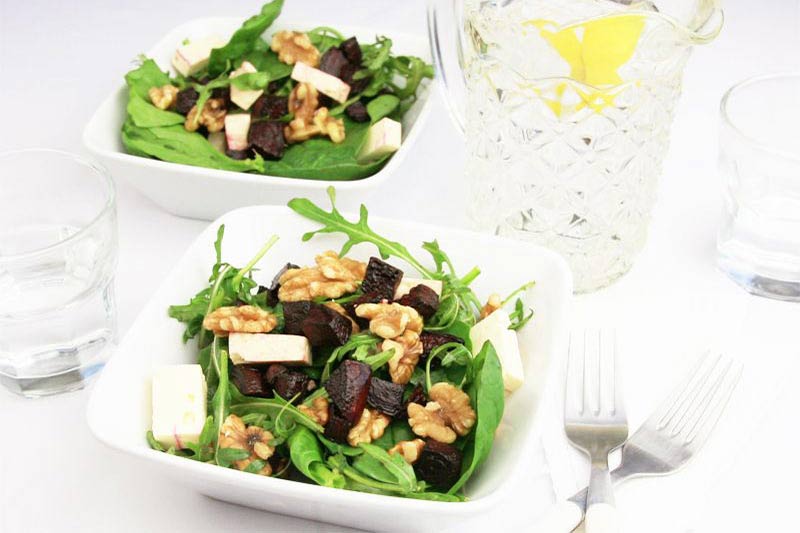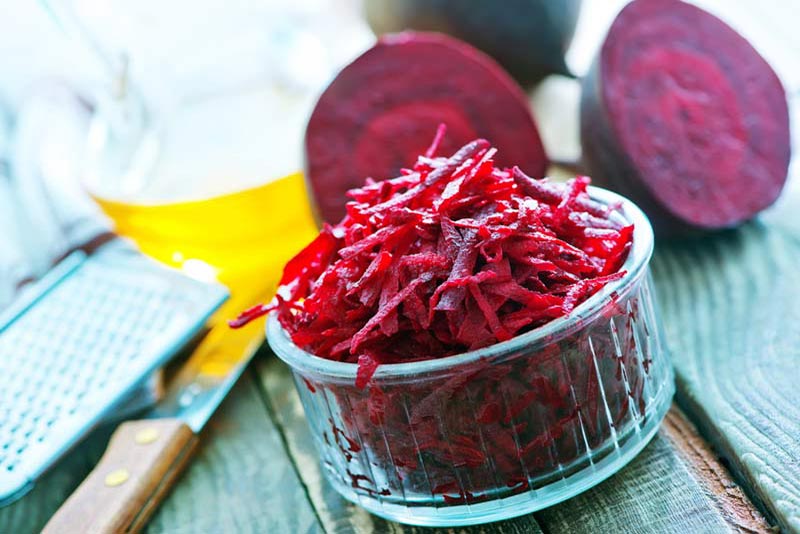Table of Contents[Hide][Show]
Beets for diabetes—wondering if they are a blood sugar friendly food? You’re in the right place.
Beets are a vibrant and versatile vegetable that can add both color and nutrition to your meals. From deep red to golden yellow, orange, and even purple varieties, beets are more than just eye-catching—they do offer a wealth of health benefits for people with type 2 diabetes and prediabetes.
Interesting fact: “Beetroot” and “beets” both refer to this root vegetable and the terms are used interchangeably.
Beets do contain natural sugar and, in fact, sugar beets are one of the primary sources of sucrose in the world today. But that doesn’t make beets bad.
Let’s dive into the details about beets, their nutritional profile, and how they might fit into a diabetes-friendly diet.
Beets Nutrition Facts
- Beetroot is moderate in calories, around 44 cal per 3.5oz/100g of boiled beets
- Beets are considered a “medium glycemic index” food with a value of 61-64
- Beets provide 2-3 grams fiber per 3.5oz/100g serving
- Beets are an excellent source (>20%) of folate and a very good source (10-19%) of copper, potassium, and manganese
- Beetroot contains unique phytonutrients called “betalains” as well as lutein and zeaxanthin
- Beets are high in inorganic nitrates
Let’s compare the nutrition facts of a few different beets, raw, cooked and beet greens.
Raw Beetroot (1 small beet, ~2″ diameter, 3 oz/82 g)
Cooked Beetroot (3.5 oz/100 g boiled)
- Calories: 44
- Carbs: 9.9 g (Net Carbs: 7.9 g)
- Fiber: 2 g
- Potassium: 305 mg
- Magnesium: 23 mg
- Folate: 80 µg
Beet Greens (1 cup cooked, 5 oz/144 g)

Health Benefits of Beetroot
Beets provide an array of nutrients, including fiber, folate and potassium, alongside unique compounds like betalains and nitrates that contribute various health benefits.
- Fiber helps with digestion, prevention of gastrointestinal disease and chronic disease, including type 2 diabetes.
- Potassium promotes cardiovascular health including lowering blood pressure.
- Betalains have been shown to provide antioxidant activity, reduce inflammation and provide detoxification support.
- Lutein and zeaxanthin are carotenoids that promote healthy eyes.
- Nitrates, when converted to nitric oxide, relax blood vessels helping to lower blood pressure.
Research on Beets Specific to Type 2 Diabetes
- Beets have been shown to be effective at lowering blood pressure, reducing cholesterol, reducing LDL oxidation
- They are rich in antioxidants that protect against disease and are cancer preventative.
- Beetroot juice provided to individuals with type 2 diabetes resulted in improved exercise efficiency and may help improve insulin sensitivity as well – though, being that we encourage a low carb nutrition plan, we wouldn’t recommend juicing – but it’s good to know beets contain beneficial properties.
Are Beets Good for Diabetics?
Yes, beets can be a diabetes-friendly vegetable. While they contain natural sugars, their medium glycemic index is balanced by a low glycemic load (GL) of just 5 per serving.
This means that beets are unlikely to cause significant blood sugar spikes, especially when paired with proteins, healthy fats and other non-starchy vegetables, in a chicken salad for example.
Research has shown that beetroot can improve insulin sensitivity and enhance exercise efficiency, likely due to its nitrate and antioxidant content.
However, it is best to enjoy whole, cooked or raw beets, rather than canned beets. Canned beetroot often contains additional sugar. If you have a choice, opt for fresh beets and use them to add their unique sweetness and color to your meals.
And don’t forget the beet greens—you can often get these free at the local veggie shop and they can be used like spinach or any other leafy green. Beet greens are extremely nutritious!
Are Pickled Beets Good for Diabetics?
Pickled beets can be included in a diabetes-friendly diet, but it’s important to check the ingredients.
Many store-bought pickled beets contain added sugars, which can increase their blood sugar impact.
Opt for pickled beets made without added sugar, or make your own at home using vinegar and spices for flavor.
The pickling process does not significantly alter the nutrient profile of beets, so they still provide fiber, potassium and antioxidants. Just be mindful of portion sizes, as pickled foods can be high in sodium.
Is Beet Juice Good for Diabetics?
Beet juice has been studied for its potential benefits, such as improving blood flow and reducing blood pressure.
However, for people with diabetes, beet juice may not be the best option. Juicing removes fiber, leaving behind concentrated sugars that can cause blood sugar spikes.
If you’re interested in the benefits of beets, it’s better to consume them whole or cooked. Pairing beets with a source of protein (cheese, chicken, eggs or nuts) or healthy fats can further mitigate their impact on blood sugar levels.
Points for Consideration
- If you’ve not had beets before this is one very important thing to be aware of. Beets are very rich in red pigmentation and also fiber. When you excrete waste, some of this pigmentation follows—in other words, when you go to the bathroom your poop may be red. This can be scary as it resembles blood.
- Beeturia is when there is red pigment in the urine, which may be indicative of iron deficiency. If you see this contact your physician to discuss.
- Additionally, beetroot (and especially the beet greens) contains oxalates, which are not problematic in small amounts, but can be toxic, contributing to kidney stones when consumed in excess.
- Finally, beets are a source of fructans, which are limited on FODMAPS diet. This is a diet that eliminates fruits and vegetables with specific sugar chains in an effort to reduce symptoms of IBS (irritable bowel syndrome).
Please pin, tweet or share this info, then keep on reading.

Beets in the Kitchen
Selecting the Best Beets
Choose small or medium sized beets (about the size of a tennis ball) with firm skin and deep color. Avoid beets that are very soft or have areas that look spoiled or rotted.
Storing Beets
Beets should be stored in a root cellar (~50 degrees) or refrigerator (wrapped in air-removed plastic) until ready to use. Do not cut beets (including cutting of the ends or the top where the stem is) until ready to use. They will keep for 3-4 weeks if uncut. Once cut, they should be used within 4-5 days.
Using Beets
Beets can be added to salads, roasted as sides, baked at chips, or blended into soups or smoothies.
The green leaves and stems from beetroot can be eaten as well and are often cooked down in broth, salt and pepper or can be blended into smoothies. You can use the beet greens as you would any other green leafy vegetable. They have a wonderful sweetness to them.
Beets can also be spiralized and substituted for pasta, which may sound strange but really does work!
Cooking Beets
Boil/simmer beets for 30-40 minutes or until tender.
Roast beets in oven (350-400°F, 175-200°C) for 45-60 minutes or if cubed for around 25 minutes.
Steam beets for 15 minutes – this method seems to preserve the most nutrients.
Cutting Techniques
Scrub beets well and either peel or leave skins on the skins are edible.
Using a large, sharp knife, slice off ends and either grate raw (in the case of salads) or slice into circles. Chop beets into slices or small squares. Often beets are cooked whole eliminating the need for cutting.

How to dice beets demonstration
How to grate beets demonstration – note, you do not have to peel them if you wash them well. You can eat the skin, too.
How to chop beets into matchsticks demonstration
Beetroot Recipes
Beetroot Walnut Salad
Easy Beet Side Salad
Beetroot and Diabetes Conclusion
Beets are a sugar-containing root vegetable with a medium glycemic index and therefore, should be consumed less frequently or in smaller amounts than non starchy vegetables such as leafy greens and other lower carb vegetables.
But, all things considered, the glycemic load of beets is only 5 – meaning it will not likely have a dramatic impact on blood glucose so long as it isn’t combined with other high carb foods, it is perfectly fine to eat.
Although many low carb diets won’t include beets, we consider it to be a very nutrient dense vegetable worth keeping in your diet for the health benefits it provides. If you pair it with proteins, fats and leafy greens such as in a salad with nuts, it will still keep your overall carb intake in a healthy range.
ENJOY!



Manuel Correia
is the 30 day meal plan of $24.00 a one time fee or will it be a monthly fee?
Do you have a discount code and if so where do I find it?
Jedha
All our meal plans and programs are a one time fee Manuel. We only offer discounts from time to time. We have none on offer at this time.
Danette
What is the difference with beets that are pickled?
Jedha
Pickled beets contain sugar so they will be much higher in carbs whereas fresh is fresh, without the additives.